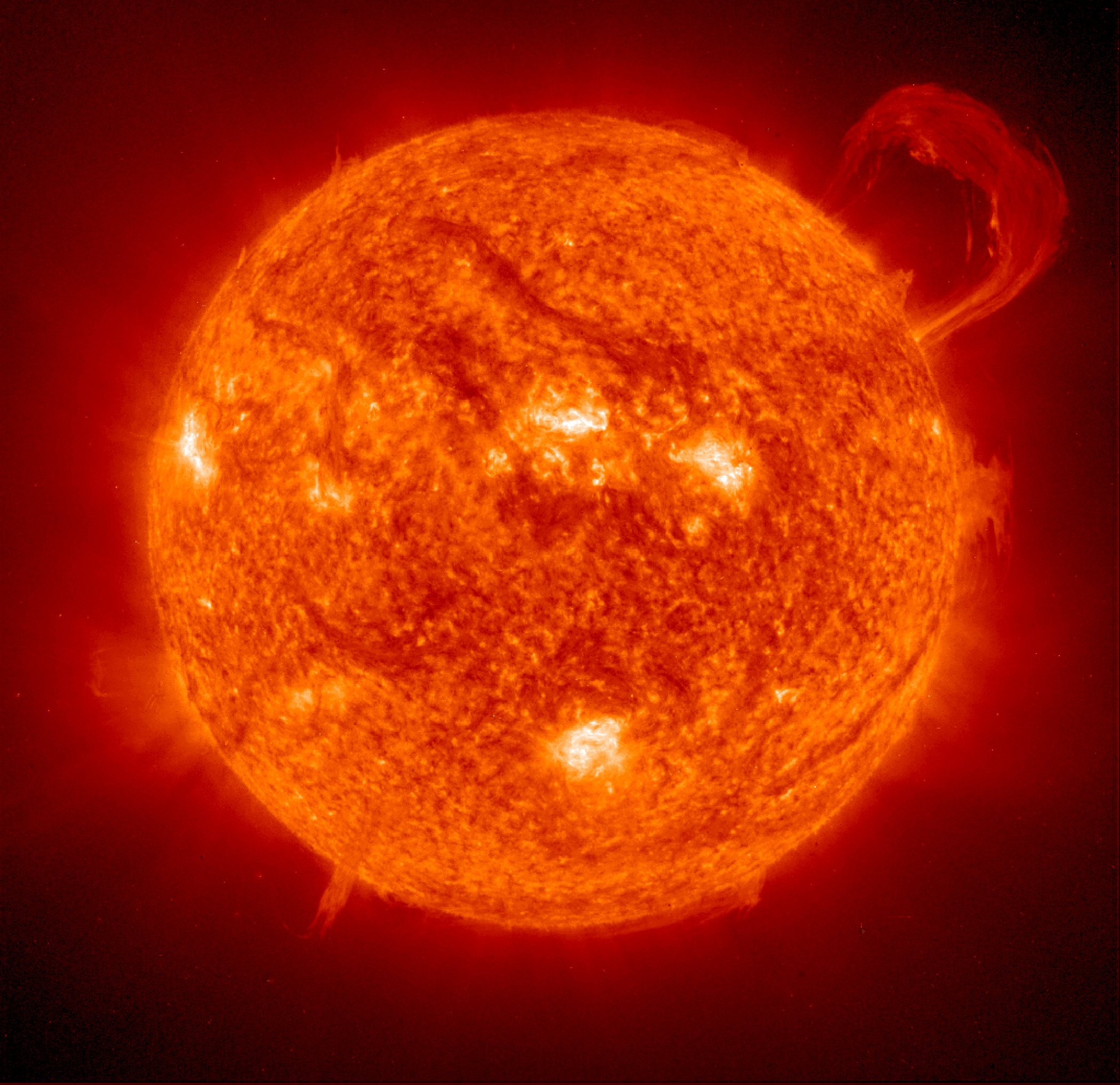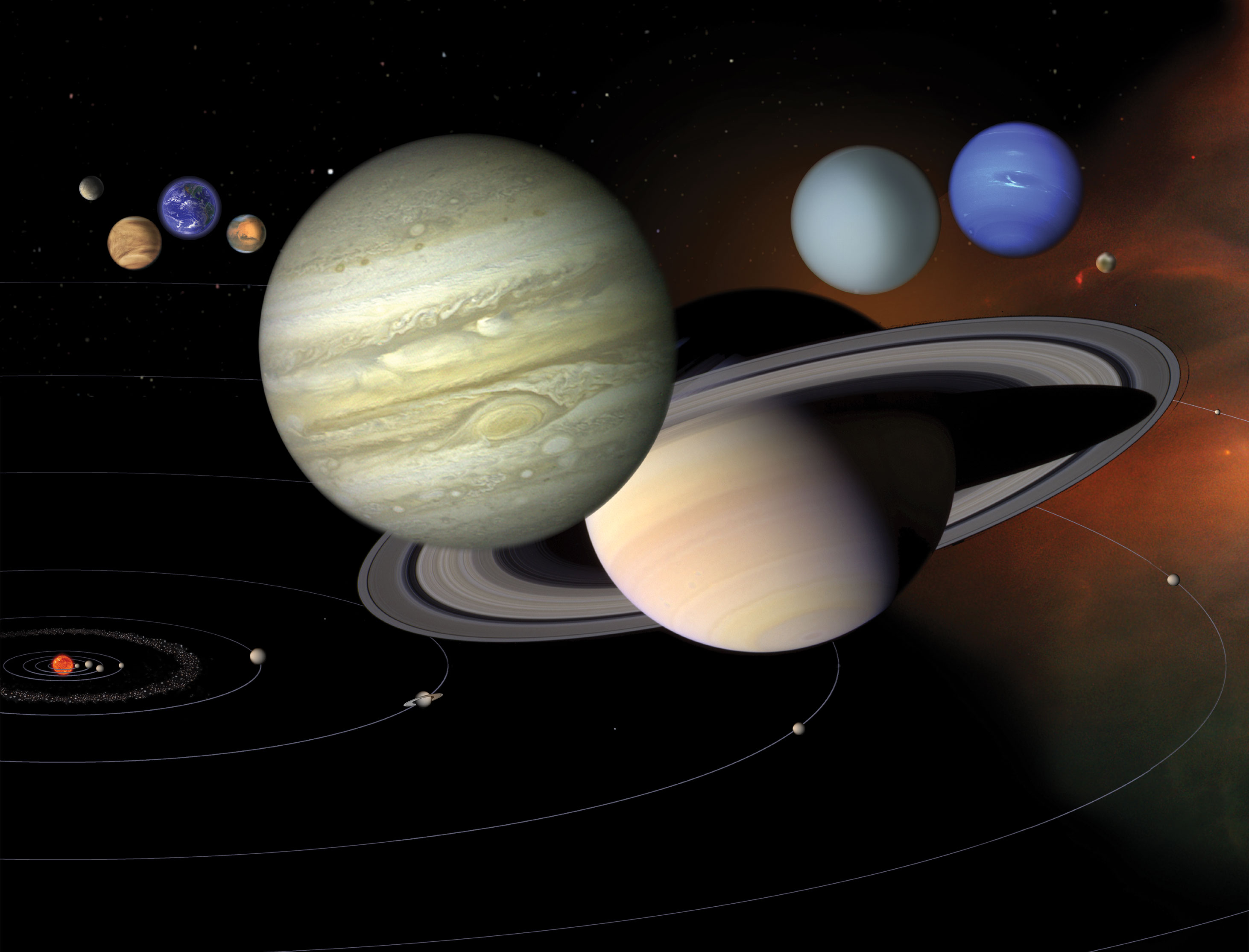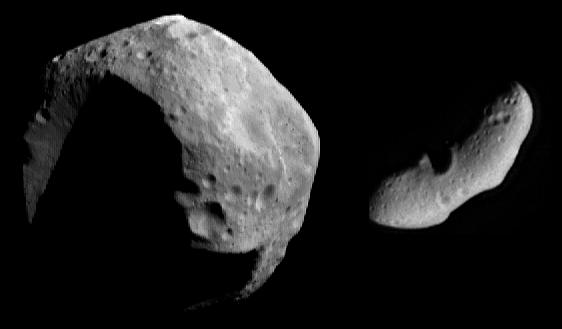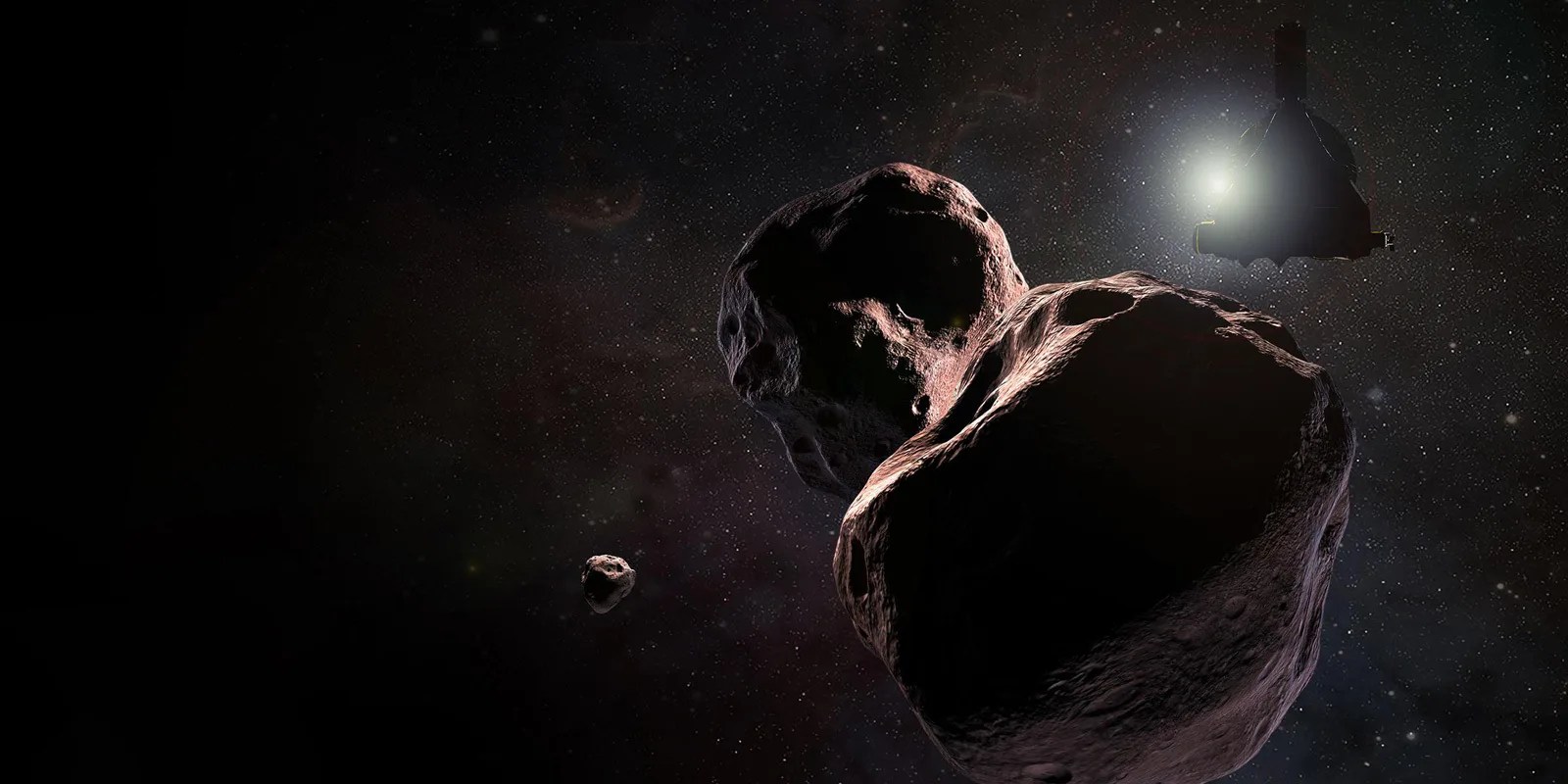Albiorix
Albiorix was discovered on Nov. 9, 2000 by Matthew J. Holman and Timothy B. Spahr, using the 6.5-m reflector telescope at the Fred Lawrence Whipple Observatory on Mt. Hopkins, near Amado, Ariz.
Albiorix has a mean radius of 9.9 miles (16 km), assuming an albedo (a measure of how reflective the surface is) of 0.06. At a mean distance of 10.2 million miles (16.4 million km) from Saturn, the moon takes about 783.5 Earth days to complete one orbit.
Albiorix is one of the four known members of the Gallic group of moons. These moons have prograde orbits (they travel around Saturn in the same direction as the planet's rotation), but their egg-shaped, angled orbits classify them as "irregular" moons. Like Saturn's other irregular moons, they are thought to be objects that were captured by Saturn's gravity, rather than having accreted from the dusty disk that surrounded the newly formed planet, as the regular moons are thought to have done.
The similarities among the orbits of moons in the Gallic group suggest a common origin—they may be fragments of a single object that shattered in a collision. The other members of this group are Bebhionn, Erriapus, and Tarvos.
Observations by Tommy Grav and James Bauer using telescopes on Mauna Kea, Hawaii in 2006 found that the color of Albiorix varies over its surface. They hypothesize that Tarvos and Erriapus, which were both seen to be light red, are the largest fragments from an impact on Albiorix, leaving a less-red crater (these observations did not include Bebhionn).
Originally called S/2000 S11, Albiorix was named for a Gallic deity who may have been equivalent to the Roman god Mars.




